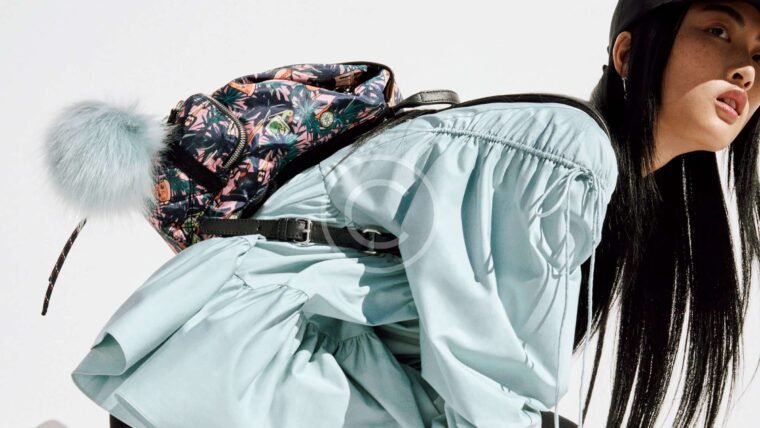Personal style is an essential aspect of self-expression and can have a significant impact on confidence and overall well-being. When we feel good about how we look, it can positively affect our mood and how we interact with the world around us. However, in a world dominated by fast fashion and trends that change at lightning speed, it can be easy to lose sight of our personal style and get caught up in the cycle of constantly buying new clothes.
This is where sustainable fashion comes in. Sustainable fashion is a movement that aims to reduce the negative impact of the fashion industry on the environment and society. It encourages consumers to make more conscious choices when it comes to their clothing purchases, considering factors such as the materials used, the production process, and the longevity of the garment. By embracing sustainable fashion, we not only align our personal style with our values but also contribute to a more sustainable future.
Understanding Sustainable Fashion: How to Make Eco-Friendly Choices
Sustainable fashion is a broad term that encompasses various practices aimed at reducing the environmental and social impact of the fashion industry. It involves considering the entire lifecycle of a garment, from the sourcing of materials to its disposal. By making eco-friendly choices when shopping for clothing, we can support brands that prioritize sustainability and contribute to positive change.
One way to make eco-friendly choices is by opting for clothing made from sustainable fabrics. Organic cotton, for example, is grown without the use of harmful pesticides and chemicals, making it better for both the environment and our skin. Recycled polyester is another sustainable fabric option, as it reduces the need for virgin materials and helps divert plastic waste from landfills.
When shopping for sustainable clothing, it’s also important to consider the production process. Look for brands that prioritize fair labor practices and transparency in their supply chain. Supporting brands that pay fair wages and provide safe working conditions ensures that the people behind our clothes are treated ethically.
Eco-Friendly Fabrics: A Guide to Sustainable Fashion Materials
There are various sustainable fabrics available today, each with its own benefits and drawbacks. Organic cotton, as mentioned earlier, is a popular choice for sustainable fashion due to its reduced environmental impact. It is grown without the use of harmful chemicals and promotes biodiversity in agricultural ecosystems. However, organic cotton does require a significant amount of water to grow, so it’s important to consider water usage when choosing this fabric.
Another sustainable fabric option is Tencel, also known as lyocell or modal. Tencel is made from wood pulp sourced from sustainably managed forests. It is known for its softness and breathability, making it a great choice for clothing items like dresses and tops. Tencel also has a low environmental impact, as the production process uses less water and energy compared to other fabrics.
Recycled polyester is another sustainable fabric gaining popularity in the fashion industry. It is made from post-consumer plastic bottles and other recycled materials. By using recycled polyester, we can help reduce the amount of plastic waste that ends up in landfills and oceans. However, it’s important to note that the production of recycled polyester still requires energy and resources, so it’s essential to consider the overall lifecycle impact of the fabric.
Upcycling and Thrifting: Ways to Embrace Sustainable Fashion on a Budget
Sustainable fashion doesn’t have to be expensive. In fact, one of the most budget-friendly ways to embrace sustainability is through upcycling and thrifting. Upcycling involves transforming old or unused clothing items into something new and unique. This can be as simple as adding embellishments or altering the fit of a garment. By upcycling, we give new life to old clothes and reduce waste.
Thrifting is another great way to embrace sustainable fashion on a budget. Thrift stores and secondhand shops offer a wide range of clothing options at affordable prices. By shopping secondhand, we extend the lifespan of clothing items and reduce the demand for new production. Thrifting also allows us to discover unique and vintage pieces that can add character to our personal style.
When thrifting, it’s important to have an open mind and be willing to explore different styles and sizes. Don’t be afraid to try on items that may not be your usual style, as you might be pleasantly surprised. Additionally, consider donating or selling your own gently used clothing to thrift stores, as this helps keep the cycle of sustainability going.
Trending Fashion: How to Incorporate the Latest Styles into Your Personal Style
While it’s important to stay true to our personal style, incorporating current fashion trends can be a fun way to refresh our wardrobe. The key is to choose trends that align with our personal style and values. Sustainable fashion trends are emerging that prioritize both style and sustainability.
One sustainable fashion trend that has gained popularity in recent years is the oversized blazer. This versatile piece can be dressed up or down and adds a touch of sophistication to any outfit. Look for blazers made from sustainable fabrics like Tencel or recycled polyester.
Chunky sneakers are another sustainable fashion trend that has taken the industry by storm. These comfortable and stylish shoes are perfect for adding a casual yet trendy touch to any outfit. Look for brands that use sustainable materials in their sneaker production, such as recycled rubber or vegan leather alternatives.
Accessorizing for Impact: Using Jewelry and Accessories to Elevate Your Look

Accessories play a crucial role in elevating our personal style and making a statement. When it comes to sustainable fashion, there are plenty of options for eco-friendly jewelry and accessories.
One option is to look for jewelry made from recycled materials. Many brands now offer jewelry made from recycled metals, such as sterling silver or gold. By choosing recycled materials, we reduce the demand for new mining and minimize the environmental impact of jewelry production.
Another sustainable option is to opt for jewelry made from natural materials, such as wood or bamboo. These materials are renewable and biodegradable, making them a great choice for eco-conscious consumers. Look for brands that prioritize fair trade practices and work with artisans to create unique and ethically made pieces.
When it comes to accessories like bags and belts, consider opting for vegan leather alternatives. Traditional leather production has a significant environmental impact, as it involves the use of toxic chemicals and contributes to deforestation. Vegan leather, on the other hand, is made from plant-based materials or recycled plastics and offers a cruelty-free alternative without sacrificing style.
Building a Capsule Wardrobe: Simplifying Your Closet and Maximizing Your Style
A capsule wardrobe is a collection of essential clothing items that can be mixed and matched to create a variety of outfits. The concept of a capsule wardrobe promotes minimalism and sustainability by encouraging us to invest in versatile pieces that can be worn for multiple occasions.
Building a capsule wardrobe starts with decluttering our current closet and identifying the essential items we need. This involves taking inventory of our current clothing items and determining which ones align with our personal style and are versatile enough to be worn in different ways.
When choosing pieces for a capsule wardrobe, it’s important to prioritize quality over quantity. Invest in well-made garments that will stand the test of time and resist trends. Look for timeless styles that can be dressed up or down, such as a classic white button-down shirt or a well-fitted pair of jeans.
Personal Shopping Tips: How to Shop Smart and Avoid Impulse Buys
Shopping mindfully is an essential aspect of sustainable fashion. By avoiding impulse buys and investing in quality pieces that align with our personal style and values, we can reduce waste and make more conscious choices.
One tip for shopping smart is to create a shopping list before heading to the store or browsing online. This helps us stay focused and avoid purchasing items we don’t need. Consider the gaps in your wardrobe and prioritize items that will enhance your existing collection.
Another tip is to take your time when making purchasing decisions. Instead of buying something on the spot, take a moment to think about whether it aligns with your personal style and if you can see yourself wearing it for years to come. This helps prevent impulse buys and ensures that every purchase is intentional.
When shopping online, read product descriptions carefully and look for information about the brand’s sustainability practices. Many brands now provide details about the materials used, the production process, and their commitment to ethical practices. Supporting brands that prioritize sustainability and transparency helps drive positive change in the fashion industry.
Dressing for Your Body Type: Flattering Styles for Every Shape and Size
Dressing for our body type is an important aspect of personal style. When we wear clothes that flatter our shape and size, we feel more confident and comfortable in our own skin. Here are some tips for finding flattering styles for different body types:
– Pear-shaped: If you have a pear-shaped body, with wider hips and a smaller waist, opt for A-line skirts and dresses that cinch at the waist. This helps balance out your proportions and accentuate your waistline.
– Apple-shaped: If you have an apple-shaped body, with a fuller midsection, choose clothing styles that draw attention away from the waist. Empire-waist dresses and tops that flow away from the body are great options.
– Hourglass-shaped: If you have an hourglass-shaped body, with a defined waist and balanced proportions, embrace fitted styles that highlight your curves. Wrap dresses and high-waisted bottoms are flattering choices.
– Rectangle-shaped: If you have a rectangle-shaped body, with a straight silhouette and minimal curves, create the illusion of curves with clothing that adds volume. Peplum tops and dresses with ruffles or pleats can help create the appearance of a more defined waist.
Remember, these are just general guidelines, and personal style should always take precedence. Experiment with different styles and silhouettes to find what makes you feel confident and comfortable.
Embracing Your Personal Style and Making Sustainable Fashion Choices
In conclusion, personal style is an essential aspect of self-expression and can have a significant impact on confidence and overall well-being. By embracing sustainable fashion, we can align our personal style with our values and contribute to a more sustainable future.
Understanding sustainable fashion involves making eco-friendly choices when shopping for clothing, considering factors such as the materials used and the production process. Sustainable fabrics like organic cotton, Tencel, and recycled polyester offer alternatives to traditional materials that have a lower environmental impact.
Embracing sustainable fashion doesn’t have to be expensive. Upcycling and thrifting are budget-friendly ways to reduce waste and discover unique pieces that add character to our personal style. Incorporating current fashion trends into our personal style can be done sustainably by choosing trends that align with our values.
Accessories play a crucial role in elevating our personal style. Opting for sustainable jewelry made from recycled materials or natural materials helps reduce the environmental impact of jewelry production. Building a capsule wardrobe simplifies our closet and maximizes our style by investing in versatile pieces that can be mixed and matched.
Shopping mindfully and avoiding impulse buys is an important aspect of sustainable fashion. By investing in quality pieces that align with our personal style and values, we can reduce waste and make more conscious choices. Dressing for our body type is another way to embrace our personal style and feel confident in what we wear.
In the end, embracing our personal style and making sustainable fashion choices is a journey. It’s about being mindful of our choices and finding what makes us feel confident and comfortable. By making small changes in our shopping habits and embracing sustainable fashion, we can contribute to a more sustainable future while expressing our unique style.





1 Comments